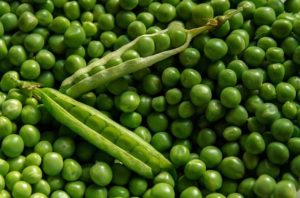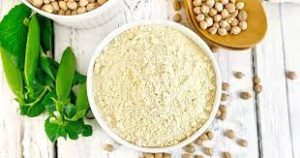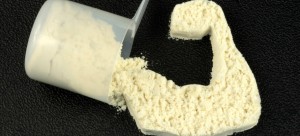Pea Protein Powder The Pros and Cons – What is pea protein powder? The pea itself is a good source of protein, and pea protein powder makes these proteins convenient and easy to obtain. Pea protein is relatively easy for the human body to digest and use, making it a popular plant protein choice.
There are several different types of pea protein powder on the market, including Pea protein isolate – This type removes most of the other compounds in pea protein. Pea Protein Concentrate – Pea Protein Concentrate may still contain other pea compounds, but the protein content is still high. Pea Protein Hydrolyzate – Hydrolyzate is a product that uses certain processes to partially break down proteins.
People feel that they cannot get enough protein from their diet alone, they may choose to add pea protein powder as a supplement to their diet, thus increasing the intake of calories, acids, or enzymes. People who want to lose weight or cut calories can look to pea protein sources to help keep their bodies full.
For athletes and people who exercise regularly, pea protein powder can be a beneficial alternative to other options, such as whey protein. Some people, such as those who are severely lactose intolerant or allergic to milk, cannot tolerate whey. As a plant-based product, pea protein is also suitable for a vegan diet. It also does not contain the most common allergens.
Table of Contents
Efficacy

Most plant protein powders (such as peas) are not complete on their own, so they do not contain all 9 essential amino acids. A trusted source reviewed the importance of improving the quality of plant proteins by mixing them with other protein sources to complete the amino acid profile or supplement it from other sources (such as Branched Chain Amino Acids (BCAAs). Doing so can produce a high-quality, complete protein.
Many companies mix pea protein with other protein sources to provide all of the amino acids, and when it comes to the efficacy of pea protein, it can produce results similar to other protein standards, such as whey. However, this is a relatively small study and researchers need to do more research to support these results. Similarly, the 2021 systematic reviews of reliable sources noted that plant and animal protein sources have comparable effects. So if you only want plant protein make sure you read the label.
Side Effects

Pea Protein Powder in the correct dosage is tolerated by most people. Some people may experience side effects from taking pea protein powder. This is more likely if the person is taking very high doses of protein. Side effects can include digestive problems, such as flatulence, constipation, and diarrhea. Some companies also use enzymes or other methods to reduce these symptoms. Eating more than the recommended amount of pea protein powder can increase the risk of side effects and indigestion. Typically, a person mixes a scoop of pea protein powder with a water or milk substitute, shakes it well, and then drinks the beverage. They can also add it to foods like porridge. People can make protein shakes once or twice a day before, during, or after exercise.
Pea Protein vs Whey Protein

Whey protein is better than pea protein? The difference between whey protein and pea protein is an important part of muscle tissue development, recovery, and overall function, regardless of source. The scientific side of the debate about whether a high-protein diet is beneficial for an active lifestyle has long since disappeared. However, as hypersensitivity (IBD/IBS) increases, allergies, food preferences, and/or restrictions are increasing the demand for alternative solutions to animal proteins.
Protein has already saturated the market. Among the many options (cannabis, beans, chia, etc.), pea protein is the best choice for many whey proteins. This article explains the key differences between whey protein and pea protein. This may be your best option. Keep in mind pea protein by itself does not contain 9 essential amino acids.
What is Whey Protein

Whey protein is one of the most important proteins in milk and is a natural by-product. Cheese production. Whey protein is one of the most “complete” proteins available. That said, it contains significant amounts of all 9 essential amino acids. Whey protein is naturally isolated and distributed in fat and muscle mass.
Whey promotes protein synthesis through high levels of leucine. This protein is most consumed by the health and fitness community. With amino acids and insulin, you can strengthen muscles, increase strength, and increase blood flow. Whey protein is also known to lower blood pressure, promote weight loss, and reduce inflammation.
What is a Quality Protein?

Here’s a brief introduction to what protein quality or “perfect” means. Protein is made up of amino acids and has 9 essential amino acids. It is called “absolute” because it cannot be reproduced if the protein source does not contain almost all nine substances.
Total protein includes meat, eggs, dairy, soy, quinoa, and many other proteins. A cup of ripe peas contains about 10 grams of protein, which is not completely “enough” due to its low methionine content but contains many branched-chain amino acids such as leucine, isoleucine, and valine. Acids are most commonly associated.
Strengthen your muscles

Nutritionists also agree that they need complete protein every time they eat. You only need to consume essential amino acids throughout the day, and a variety of simple meals can guarantee this.
Peas build muscle like whey protein. The most common milk-based whey protein powder is not only delicious but also of high quality. Chickpea is rich in branch chain amino acids. In fact, two studies published in the Journal of the International Nutrition and Exercise Association found no difference in muscle growth when comparing pea protein and whey, but whey contains about 3 times more arginine.
Arginine powder is not the most reliable pre-workout supplement, and the evidence here is confusing, but some studies show that it can improve blood circulation by producing nitric oxide.
Side effects

The fiber in plant foods, especially high doses of fiber, can cause bloating, gas, constipation, or diarrhea in many people. However, most of the fiber has been removed from the pea protein powder, which is what makes it such a concentrated protein source. According to the United States Department of Agriculture (USDA), to get 27 grams of protein from whole peas, you need to consume 3.5 cups of whole peas, which will also provide you with 29 grams of fiber; sitting has many benefits for your stomach. People with low kidney function or people prone to gout may need to consult a doctor before choosing pea protein.
Pea protein is a rich source of purines, which are a substance found in foods of animal and plant origin, which the human body converts into uric acid. Although the purine content is normal, overdose can make it difficult for the kidneys to remove all of the urea. Uric acid. This increases the risk of gout. Gout is an inflammatory disease that builds up uric acid in the blood and forms needle-shaped crystals in the joints, causing sudden, severe bouts of pain and tenderness.
The dangers of protein are the same as for all protein powders. Since pea protein powder is considered a supplement, it is not regulated by the FDA. This means that the quality and purity of supplements can vary greatly. According to Harvard Health Press, it is impossible to determine if the supplement contains what the manufacturer claims. This unregulated nature of the supplement industry poses the risk that protein powders may contain toxic substances such as lead, arsenic, and cadmium. In 2018, the Clean Label Project tested more than 130 toxins in 134 protein powder products and found that plant-based products were the worst source, with 75% of products positive for lead.
If pure pea protein causes digestive problems, look for hydrolyzed pea protein. Hydrolysis can break the amino acid chain into smaller fragments, thus improving digestibility. Additionally, according to a review article published in the British Journal of Nutrition in August 2012, hydrolyzed pea protein may have higher biological activities, including angiotensin-converting enzyme (ACE) inhibitor activity and antioxidant activity.
ACE inhibitors can help relax blood vessels and lower blood pressure, and antioxidants can fight free radicals that can damage cells and cause disease.
Diet with Pea Protein

If you increase your protein intake to lose weight, eating pea protein before meals can help you reduce your total calorie intake. In another study published in the British Journal of Nutrition in August 2012, researchers provided healthy male participants with 10 to 20 grams of isolated yellow pea protein 30 to 120 minutes before a pizza meal. 20 grams of pea protein were consumed in the first 30 minutes. It appears to have the best effect, with a lower cumulative food intake (pea protein supplement plus pizza) compared to other participants (including the control group that did not consume pea protein). Ingesting 20 grams of pea protein 30 minutes before meals also lowers blood sugar levels before and after meals.
Benefits of Pea Protein

Compared to other plant-based protein options, pea protein may outperform the competition in terms of its amino acid profile. Amino acids are the basis of proteins. According to MedlinePlus, there are a total of 20 types of food. Your body can make 11 types of food. You must get 9 types of amino acids (essential amino acids) from food. Most plant foods are called incomplete proteins because they are low in protein or lack one or more amino acids.
According to a registered dietitian and nutrition consultant at the American Cancer Institute, pea protein has a better balance of amino acids than proteins isolated from hemp, rice, and other grains. There are many reasons for protein intake, the main ones being weight loss and muscle building. In both goals, obtaining sufficient protein has been shown to play a critical role in success. The Dietary Reference Intake for Protein (DRI) established by the Food and Nutrition Committee of the National Academy of Medical Sciences is 46 grams per day for women and 56 grams per day for men. This recommendation is based on 0.8 grams of protein per kilogram of body weight.
However, this amount may not meet the needs of active people and those who want to lose weight. According to the International Society for Sports Nutrition position on protein and exercise, healthy athletes can consume 1.4 to 2 grams of protein per kilogram of body weight to support recovery from exercise and muscle growth, thereby benefiting. The more intense the exercise, the more protein is needed. To lose weight, excess protein can improve satiety and reduce total calorie intake while maintaining muscle mass.
In a study published in Obesity Facts in June 2017, overweight adults who ate a high-protein diet (1.34 grams of protein per kilogram of body weight) had a standard DRI per kilogram for 6 months. Participants with 0, 8 grams lost more weight. Monthly trial period. However, excessive protein intake does not increase any benefits. Most people can meet their protein needs through a balanced diet.
Conclusion
Relying on protein supplements can lead to nutritional deficiencies because whole foods are a rich source of natural vitamins, minerals, and antioxidant phytonutrients. If you choose to include pea protein in your diet, be sure to do so in moderation and eat a healthy, balanced diet.





